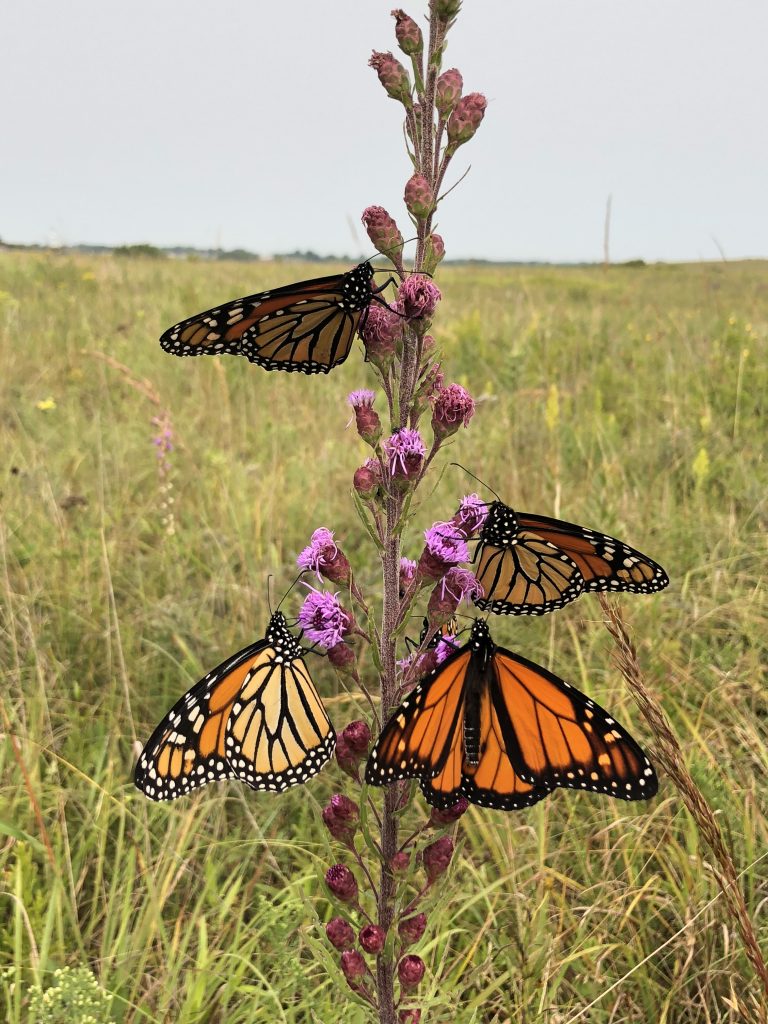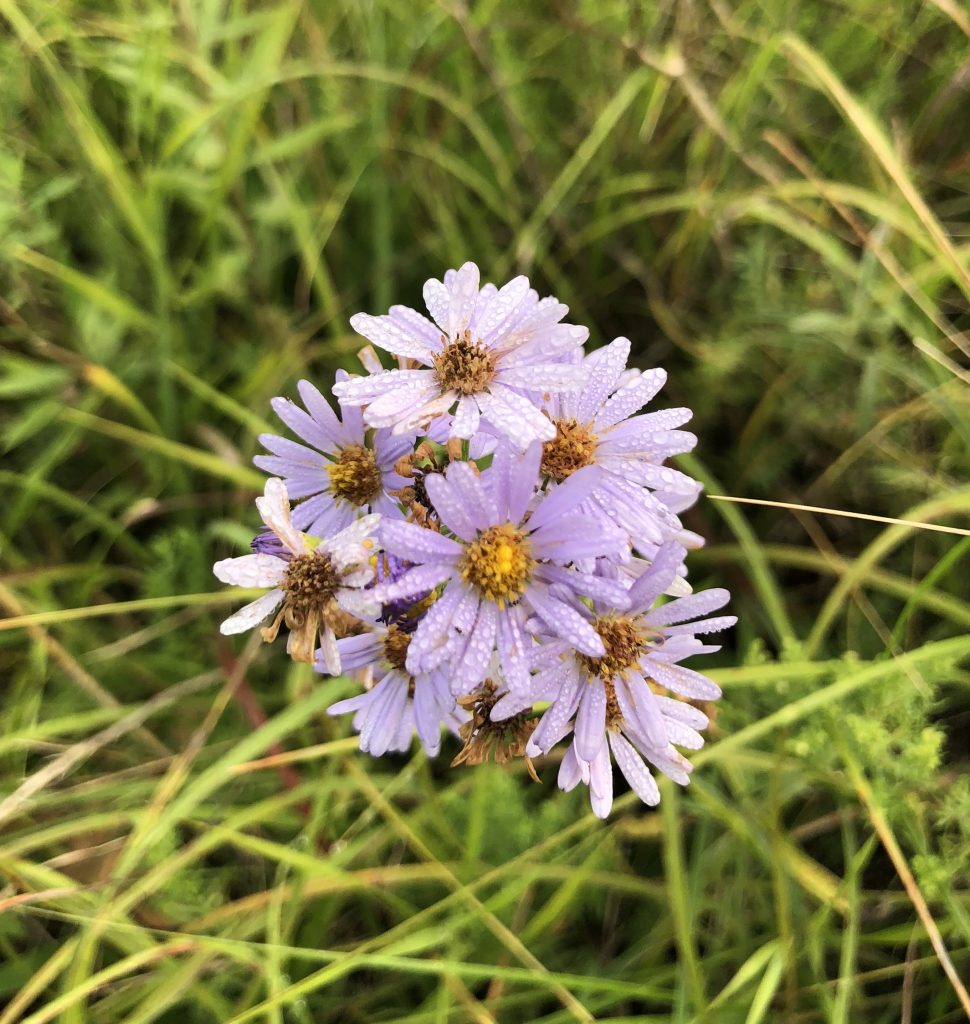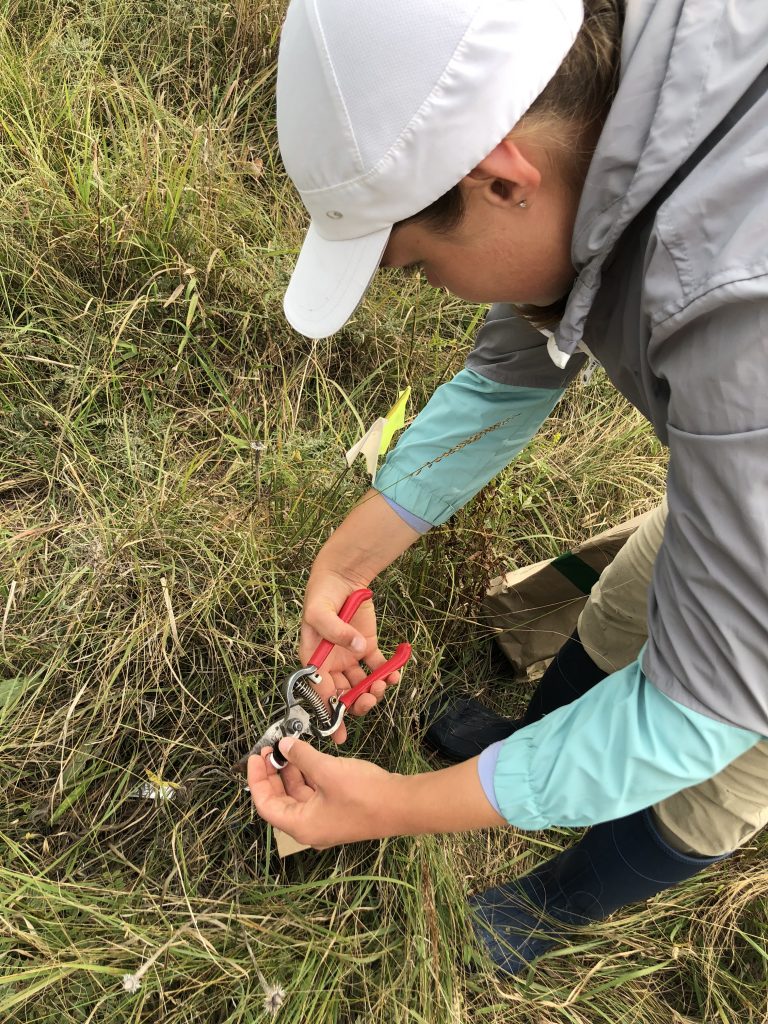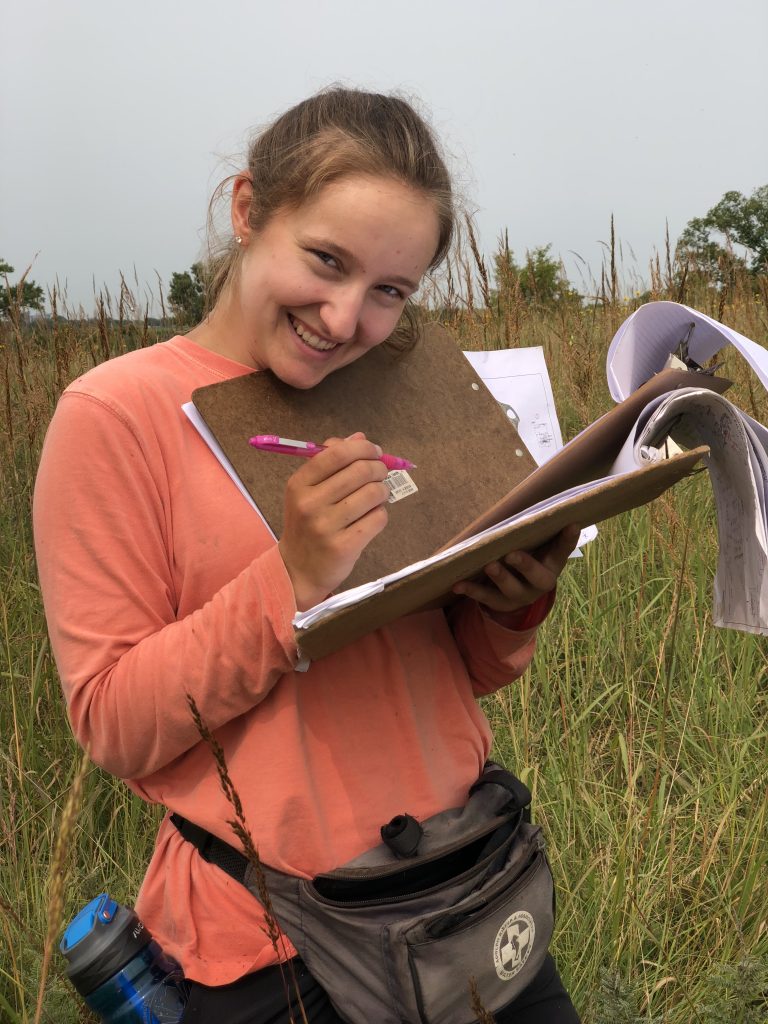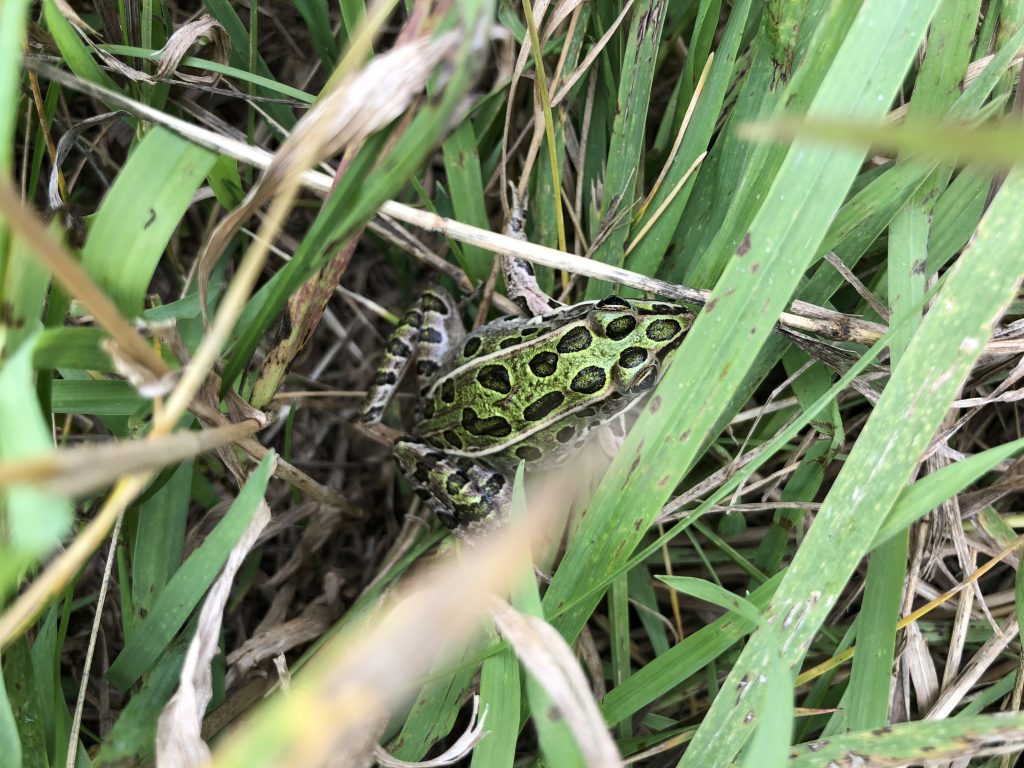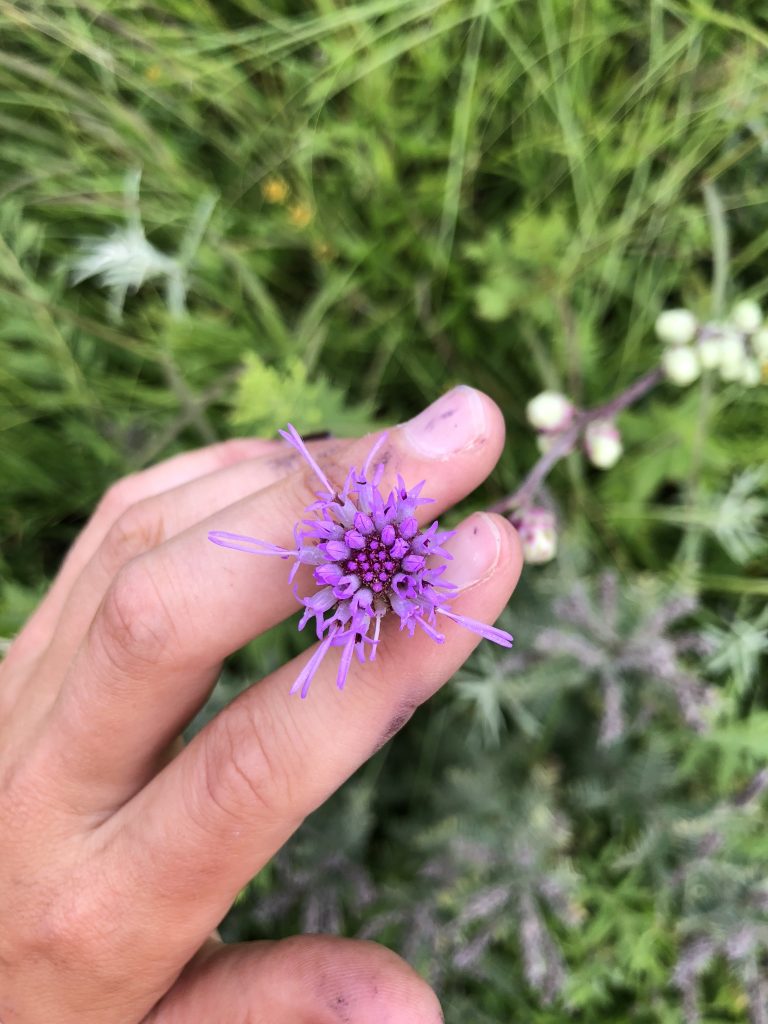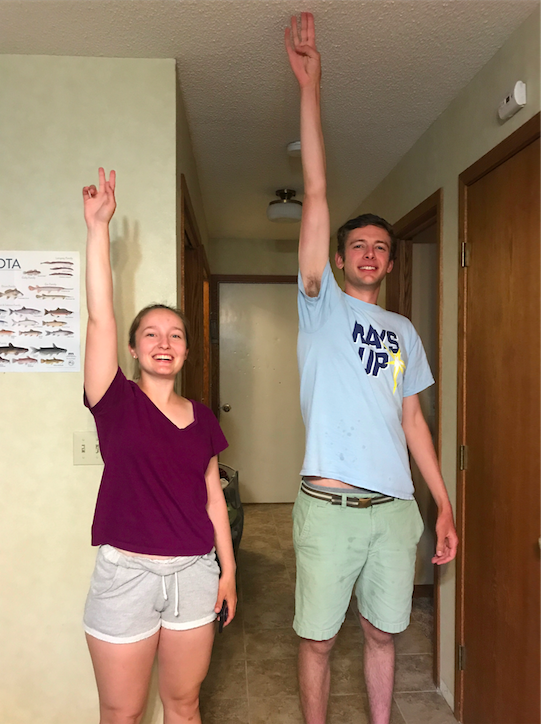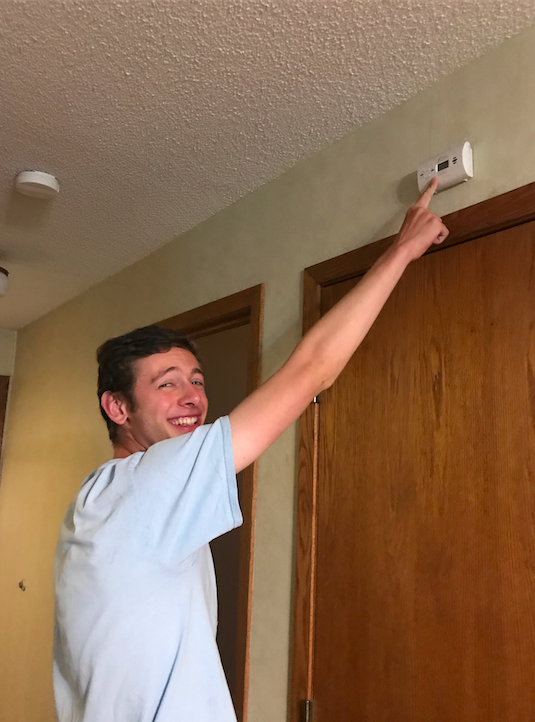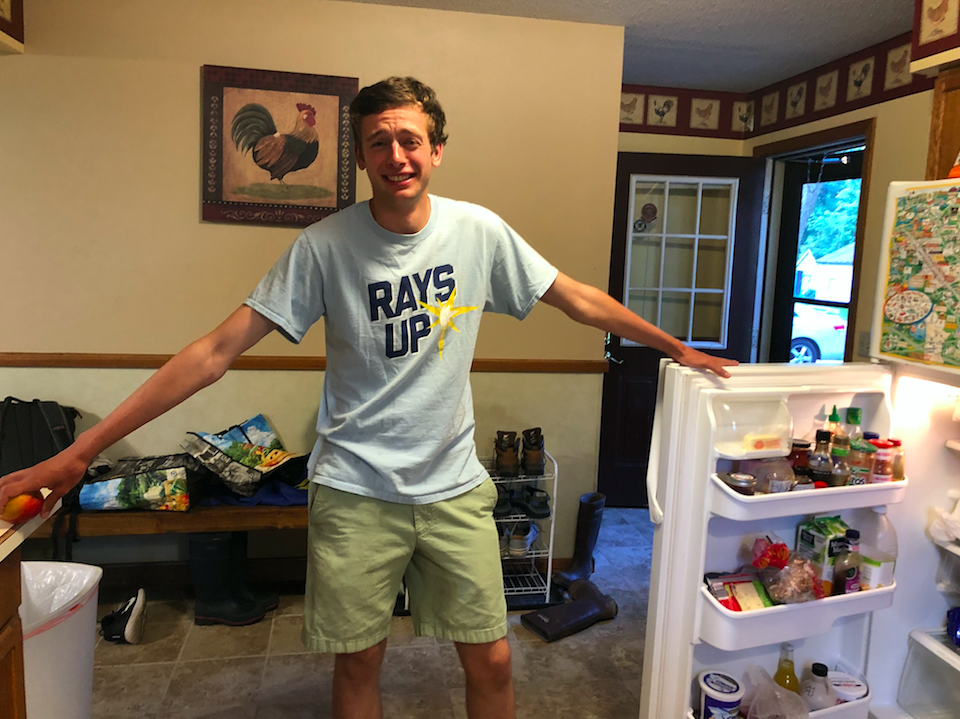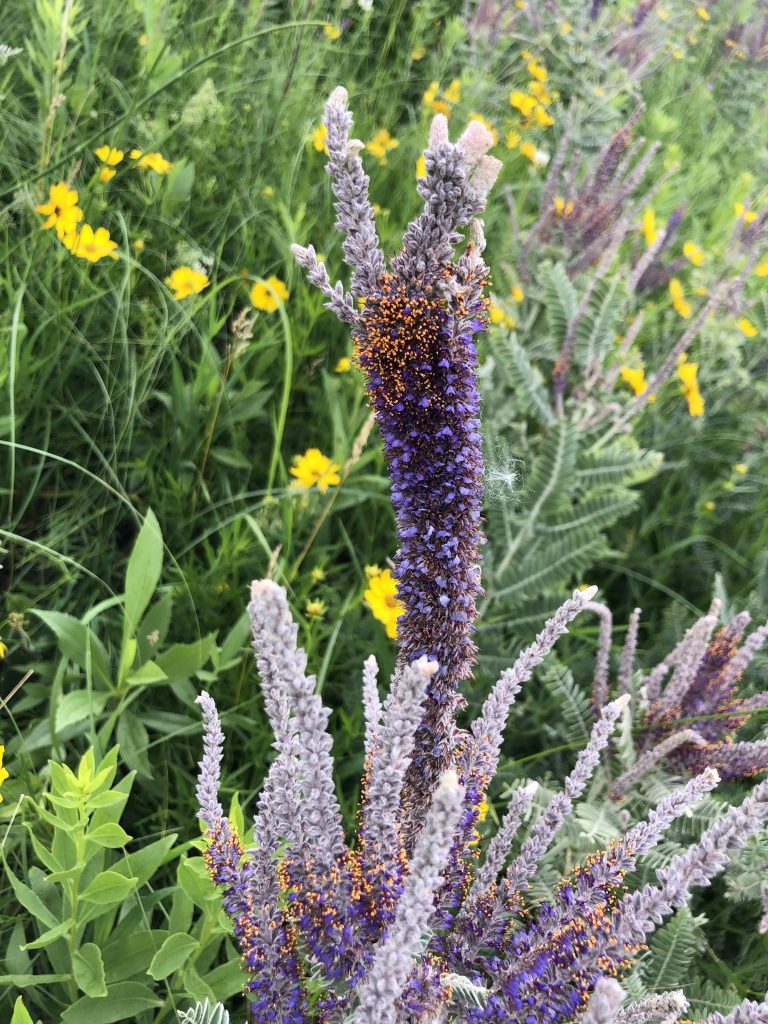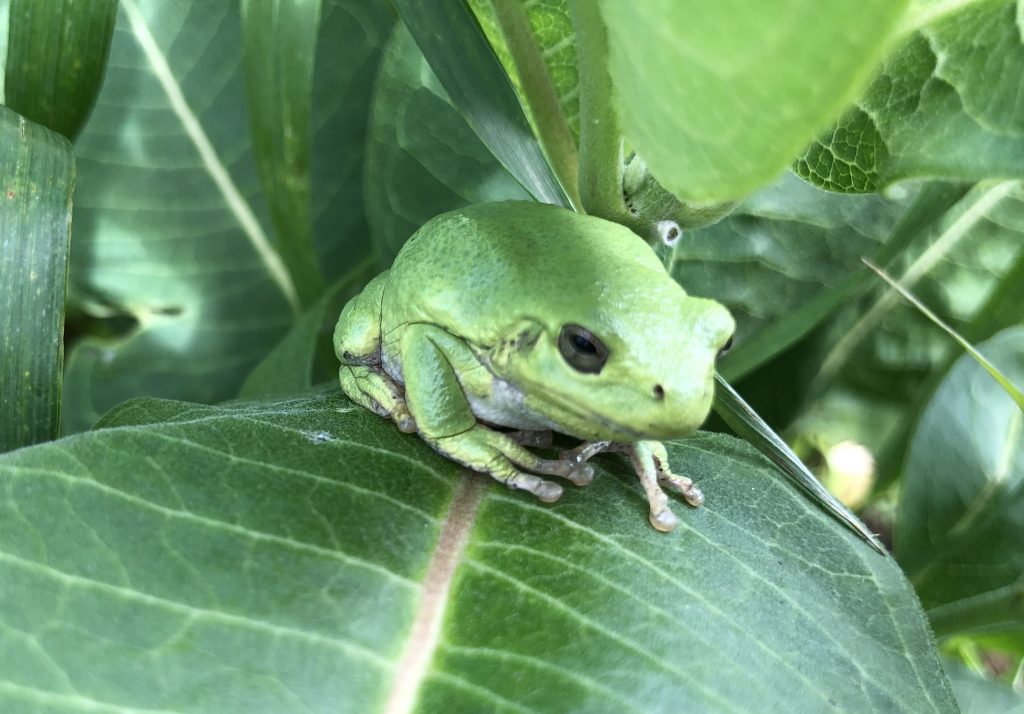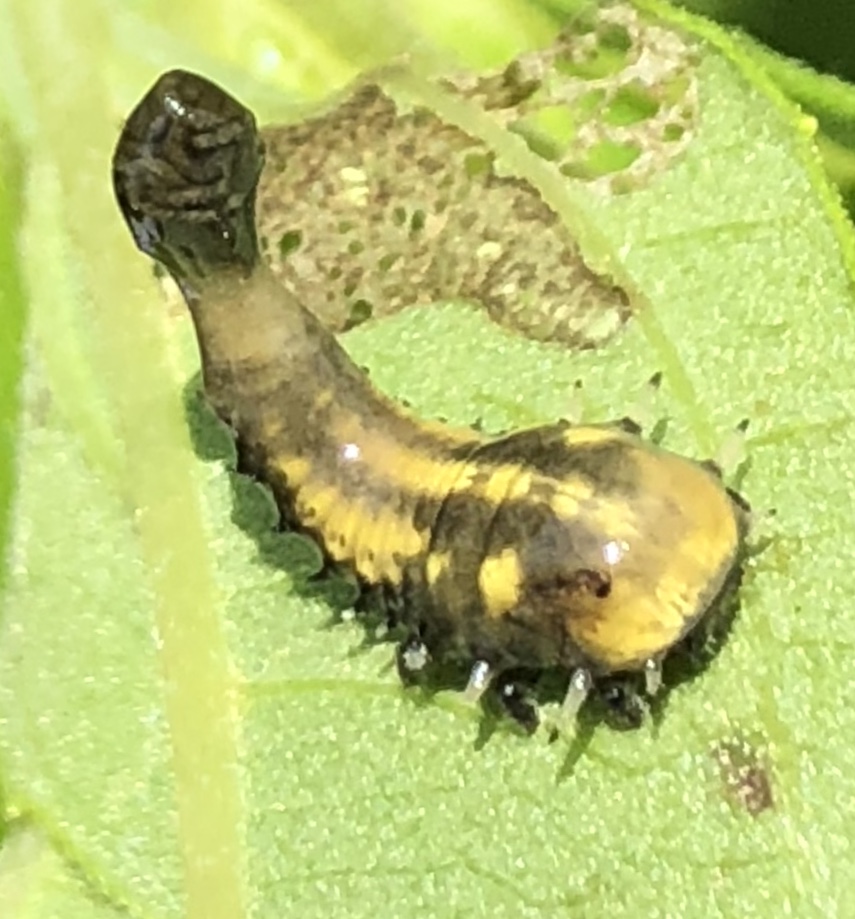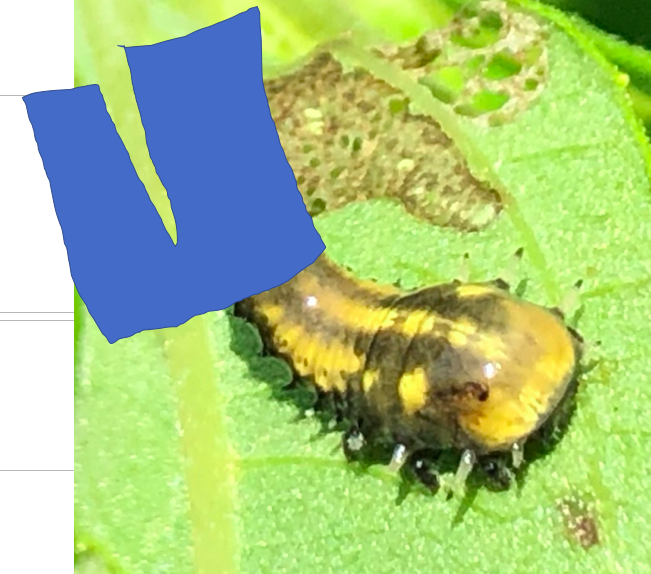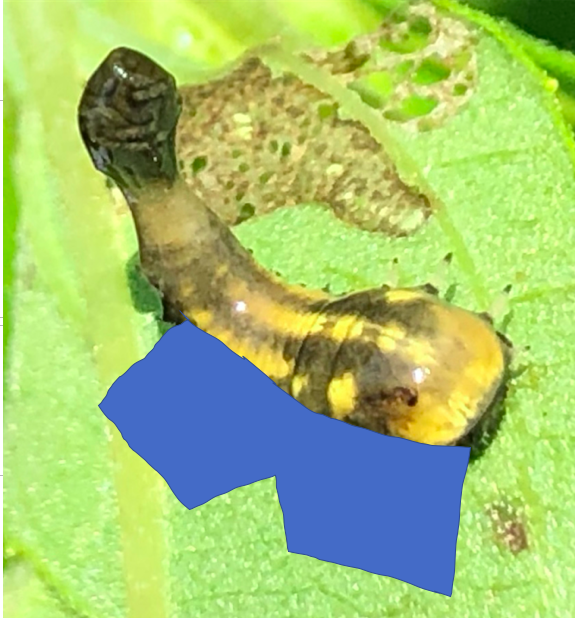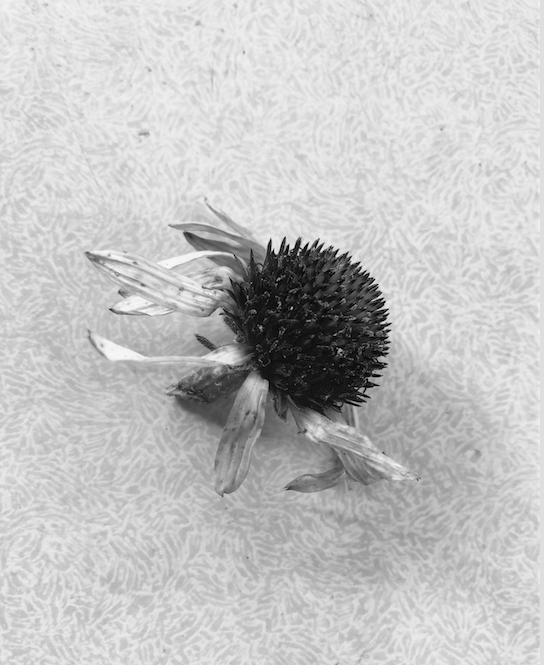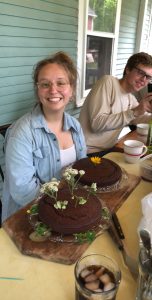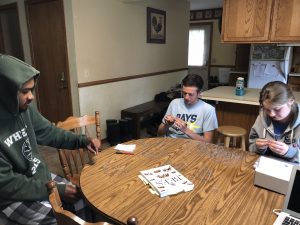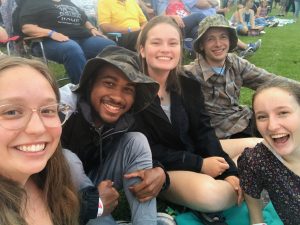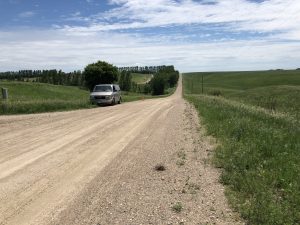|
|
Today was my last day this summer with Team Echinacea. I had an amazing summer and am sad to leave all of the great people I’ve met.
In the morning, we did measuring rechecks in P1, attempting to find missing plants. The plot was quite soggy and everyone ended up pretty soaked, collecting a lot of water in their boots. Andy made the apt suggestion that touching the electric goat fence could help us all get dry. We made the executive decision not to follow this advice. While in P1, I saw a few frogs clinging to Indiangrass stems.
 Ribbeting After rechecks, Anna and I went to Staffanson to monitor Liatris and harvest heads from the Echinacea I used for phenology. These seeds in each head will be examined for embryos in order to determine the relative reproductive success of each individual Echinacea. I hypothesize that there will be more embryos in the seeds from the burned section of the prairie.
We saw some Phlox which was still flowering (one could say it was a late bloomer, literally). We also saw a preponderance of butterflies. There were butterflies on almost every Liatris in one section and as we walked through, they all flew up in unison. I think it might have been one of the most beautiful things I’ve ever seen.
We also saw some sky blue asters which are some of my favorite flowers!

The harvest went well except that many of the heads were missing, due to some rodent or herbivore.
 Anna harvesting Echinacea There was a lot to carry and I’m definitely grateful that Anna came to help.
 Is this science? At lunch Anna and I gave research update presentations for our independent projects since it was both of our last days. Anna revealed some preliminary results regarding soil hardness in different types of land treatments (agricultural fields, prairie remnants, restorations). My presentation reported that distances between flowering Echinacea tended to be greater on the unburned section of the prairie, suggesting that fires help decrease the spatial isolation of flowering Echinaceas (the density of flowers is greater on the burned side).
In the afternoon, we harvested Bouteloua in P1.
I will truly miss this project and everyone I have met this summer!
Last week we read an article, William Cronon’s “The Trouble with Wildnerness” which got me thinking about the definition of nature and the different ways we, as humans, perceive nature. As I went about my work today, I considered these different conceptions.
In the morning, my advisor from school visited the Echinacea project and accompanied me to Staffanson. Dr. Knight is a dendrochronologist who works with really old trees (one is from 600BC) and uses their rings to piece together past climates.
When we first arrived at Staffanson, I began to trudge towards the transect, ready to begin work. Dr. Knight, however, trailed behind, looking all around. The first time I saw Staffanson, I know it was quite amazing and I know Dr. Knight felt similarly. While now I am more accustomed to this serene setting, I am often interrupted by a butterfly, a frog, or a particularly interesting flower, and am amazed all over again. Much environmental writing, like that of Thoreau and Muir, focuses on nature as pristine, even divine, a respite from the ills of human society.
 Cirsium arvense with white flower instead of its normal lavender  Leopard Frog As we approached the Southern side of Staffanson, where I monitor Liatris and Solidago flowering phenology, Dr. Knight noted the corn looming ominously in the distance. Rows upon rows of silent soldiers stood at the edge of the diverse colorful prairie. It was if Staffanson was a tiny oasis doomed to be trampled by the advancing marching army of corn. I felt a defender of the prairie, protecting the helpless prairie by studying how it could best be conserved. Conservationist writing often paints nature in this light, making nature appear vulnerable and in need of saving.

 Flowering Liatris  Andropogon gerardii; Dr. Knight and I decided that its palette would be excellent for interior decorating. Walls=dark orange; trim=light yellow; furniture=deep purple In the afternoon, we measured in P1. Sunburns, chigger bites, scratches, and other minor wounds resulted from this interaction with nature. I find research and the ability to observe nature’s curiosities worth all of these minor inconveniences. Maybe nature is harsh, hostile and inhospitable. Or maybe nature is just another part of the world to be deciphered to be learned from, to be studied.
Nature can seem pristine, vulnerable, harsh, and enigmatic. I’m not sure that these are entirely mutually exclusive, nor am I sure that one is more or less true than the others. Perhaps nature is all of these things, both gruesome and awe-inspiring, both dangerous and delicate, both puzzling and possessing answers. Regardless, I find the view across Staffanson prairie to be superior to any of which could be seen from a cubicle. This summer, all of us at the Echinacea Project pretty much have the best office space ever.
Warning: this post may contain traces of hyperbole and an overdose of alliteration.
To the untrained eye, activity at the Roost today may have seemed mundane, nothing out of the ordinary. But in reality, it was extremely eventful. We decided that laundry had languished in hampers for far too long so we launched into laundering. Meanwhile, in the living room, Mia knitted wildly, Andy ferociously consumed his book, Michael and Riley demolished their opponents in their respective video games. A select few (Zeke and Evan) participated in activities more conventionally accepted as exciting and productive: work. At P2, they spotted 18 bees while Kristen laid pan traps.
Later, Mia labored arduously over a pot, concocting a delectable dinner. The meal of spicy sauce on spaghetti squash with a side of salad was devoured by a ravenous Roost.
After dinner, Riley and Andy dueled via a game of tennis and three brave Roost-ers ventured into the dangerous outdoors to gather some groceries.
Upon return, we engaged in a rousing game called ‘What can Zeke reach?’. This game was a thrilling exploration of Zeke’s potential as the resident tall person.
Can Zeke reach the ceiling?
 Zeke touches the ceiling Can Zeke reach the tallest kitchen cabinet?
 Zeke reaches the tallest kitchen cabinet Can Zeke reach the carbon monoxide detector?
 Zeke reaches the carbon monoxide detector Can Zeke reach the fridge and counter?
 Zeke can reach from the fridge to the counter Can Zeke reach across the table?
 Zeke can reach the soy sauce  Sad Zeke can’t reach the soy sauce However… being short has it’s advantages…
 Zeke can’t fit very well  Zeke can’t fit very well  I can fit People told me that communal living teaches you to live life with peace and balance and helps you achieve self actualization. Little did I know how accurate this would be. Alone, I would be unable to reach many things. But together with Zeke and all the Roost-ers, we can reach anything: ceilings, cabinets, and even our goals.
The flogs lately have been talking a lot about the game called Werewolf. Cherished by the Roost, Werewolf is a Who-Done-It game in which a werewolf murders victims; villagers must logically discern the identity of the werewolf. We have played this game so much of late that it has come to affect my everyday life. I have begun to wonder who to trust; those who seem innocent are enemies and the dubious turn out to be telling the truth. Fear and suspicion are my new reality. The werewolf could be anywhere.
This morning, we split into task forces and I was left at Staffenson prairie completely alone. The sky was ominously cloudless and the sun shone eerily. Coreopsis, leadplant and heliopsis gave the landscape a beauty like that of a siren, luring wanderers to their demise. As I began to go about checking flowering of Echinacea, I couldn’t shake the feeling that I was being watched. All of a sudden, a grotesque monster reared its many heads. At first I thought it was a hydra, but then I realized it was more similar to Frankenstein’s monster. It was as if some doctor had surgically stitched several leadplant flowers together forming a massive mega-flower which loomed forebodingly over the heads of its brethren.
 Absurd Leadplant After my heart slowed back down to a normal pace, I continued onward. My quest included locating flowering Echinacea in order to determine differences between burned and unburned sections of the prairie. I scoured the horizon for the elusive blue flags marking Echinacea which blended bewilderingly well into the sea of purple leadplant. Since I was busy peering everywhere but the direction I was walking, I accidentally ran straight into a gigantic frog. It was 50 meters tall and at least twice as long! This monster, thankfully, was quite friendly. It had no problem with me and, when I ran into it, merely said ‘oosh’ and hopped away.
 “Oosh” The next creature I encountered was not quite as amiable. Just as I was about to leave the prairie, a grotesque beast oozing with slime emerged from the depths of its lair. It hissed and placed itself squarely in my way.

I had never seen this creature in real life, but I had heard tales of its terror. The local lore says that if the creature shakes its tail at you, you will be cursed forever. Only one has survived an encounter with this beast: the esteemed adventurer Stuart Wagenius. Some say that Stuart killed the beast with one watermelon seed, spit with the might of Paul Bunyan and the force of Chuck Norris. I have witnessed this ability and think this could be true.
I, unfortunately only can spit a watermelon a measly couple centimeters. Instead, to get past the beast, I accepted the challenge to answer a riddle. It asked me:
If I wore pants, would I wear them like this—

or like this —?’

Fortunately, I guessed correctly (I can’t tell you the right answer otherwise I’ll be cursed) and I was allowed to pass.
After a morning of adventures, I was quite glad to be back in the company of the team for lunch. Several accusations of ‘werewolf’ and ‘minion’ were levied in jest, aligning nicely with the Werewolf theme of the day.
In the afternoon, most of the team journeyed out to plot 1 to check the status of flowering Echinacea. Most of us were convinced that some werewolves had probably moved around the flags and twist ties marking the position of the flowers in order to confuse us.
The end of the day was marked by more horror, but not of werewolf making. When we got back to the Hjelm house, I noticed a lone Echinacea head rolling across the table, a reminder of the mass carnage from the previous week. In the name of science, we had guillotined many Echinacea heads and carried the heads home as trophies of our conquest. All of today I looked for monsters… but could it be that I was looking in the wrong place, that we ourselves are the monsters?

After traveling back to the Roost, enjoying a lovely meal from Andy, and having a discussion about Michael’s interesting article for literature club, we ended the night with, of course, a game of Werewolf.
This flog will be written in verse;
I hope you won’t think it’s the worst.
Rather than prose
In limericks I compose,
The daily events from the Roost.
On Friday the 29th of June,
We celebrated Kristen’s birthday at noon,
By eating some cake,
And later, listening to Drake,
After eating some Mexican food.
 Kristen & Cake
On Saturday day we relaxed;
But adventure our night didn’t lack.
To a concert we went;
It was quite an event;
The custodian from my school played the sax.
 Evan, Zeke, and Mia making hats for Echinacea flowers
^Mike Kreitzer: custodian at Saint John’s University by day, rockstar by night.
 Kristen, Evan, Mia, Zeke, Brigid (looks way too excited) at the Melrose Riverfest Concert
After a week of skeeters and ticks and horse flies,
Being outside seemed unwise.
But after a day,
Of bugs being away,
Now we miss those we all once despised.
Why did the bee cross the road? In order to answer this question first consider the road. On the first day working with the Echinacea Project, we (Zeke, John, and Brigid) visited the Around Landfill site. The aforementioned road passes through this Around Landfill site, which coincidentally, is located around a landfill. On either side of the road, C4 warm season plants and legumes grow. Alfalfa and Yellow Sweet Clover pepper the roadside, breaking up the green with flashes of purple and yellow. Small Echinacea buds hint at flowers to come. Corn dominates the landscape farther from the road. Cattle once grazed on one side of this road, as evidenced by a barbed wire fence.
There wasn’t always a road to cross. Before the road, a sea of uninterrupted prairie swayed as far as the eye could see. At this time, before the road broke the continuity of the prairie, the bee had no need to cross the road. Now, grasses, flora and legumes must straddle the road. In order to bridge this divide and visit flowers, the bee must now cross the road.
But can bees cross the road? Consider this question from the perspective of a bee. A bee’s umwelt is quite different from that of humans; bees have a short field of vision as well as the ability to see the UV spectrum of light.
We all sat on the roadside at this site, wondering if bees were indeed able to cross the road. Then, just when we asked this question aloud, a butterfly serendipitously flew across the road, as if in answer. If a butterfly can cross, we supposed that a bee can as well.
But will the bees be able to cross the road in the future? Given rapid expansion of cities, it is likely that the road will wide, creating a world for cars and not bees. Getting to ‘the other side’ could prove a much more daunting task in the future. 
Echinacea Project 2018
Biology and Environmental Studies, College of Saint Benedict and Saint John’s University, 2020
Research Interests
Last summer, I participated in a project which monitored flower phenology and I absolutely loved it. This fascination with flowers and the impact of humans on ecosystems drew me to the Echinacea Project. My research interests fall within the realms of environmental science and conservation ecology. I’m interested in the impact of climate change, habitat loss, and invasive species on ecosystems as well as plant-pollinator relationships and any research applicable to conservation and restoration efforts.
Statement
I’m originally from Olathe, Kansas and am currently attending college in Minnesota. Recently, I’ve become interested in climate justice activism because I feel it is unjust that environmental degradation tends to impact the least privileged populations first and worst. In my spare time I like to hike, play violin, try new foods, and play soccer.

|
|

